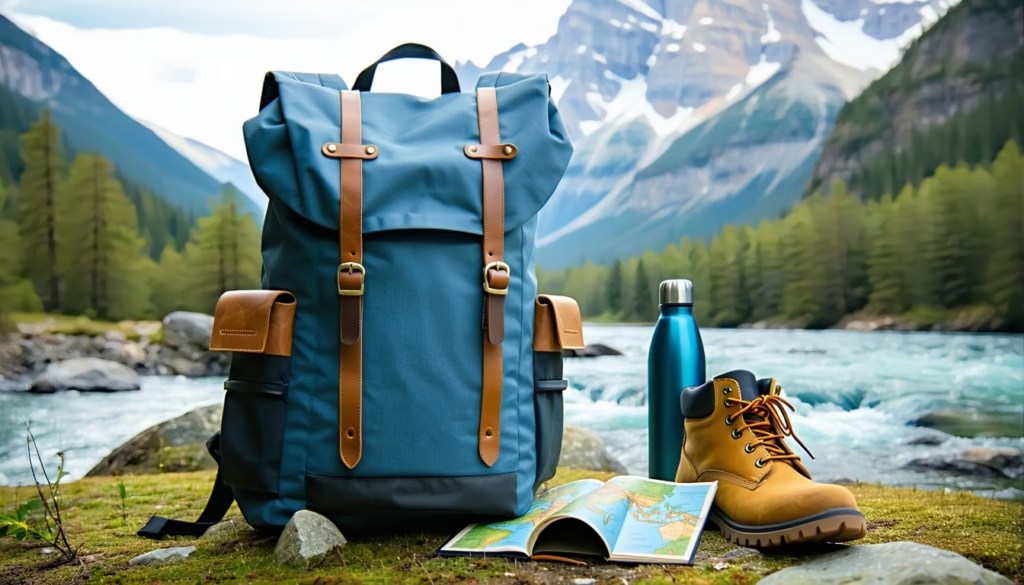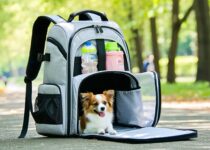Waterproof Vs Water-Resistant Weekender Backpacks: What’s The Difference?

We’ve all been on the hunt for that perfect waterproof weekender backpack to keep our essentials dry on weekend getaways or business trips. Whether we’ve dropped our bag in a puddle or stood in a sudden downpour, we know the value of reliable water protection. In this guide, we’ll dive into the difference between truly waterproof gear and water-resistant options. By the end, you’ll feel confident choosing the right pack for your travel style.
Ready to dive in?
Water Protection Basics
What Does Waterproof Mean?
Waterproof means no water can get in under normal conditions. Manufacturers seal seams, zippers, and fabric so moisture stays out. Think of a dry bag that you can dunk in water without a drop getting through.
What Does Water-Resistant Mean?
Water-resistant means the material repels light rain or splashes. A water-resistant finish is usually a durable water repellent (DWR) coating on the fabric. It sheds moisture for a while but can eventually let water in if soaked or under pressure.
Ever wondered which label works best for your overnight trips?
Key Material Differences
Common Waterproof Fabrics
- PVC and TPU Laminates offer full waterproofing, they have a plastic feel but block all water.
- Tarpaulin is heavy duty and used in roll-top bags to seal out moisture.
- Welded Seams join fabric pieces without stitching holes, so no water travels through.
Water-Resistant Coatings
- Durable Water Repellent (DWR) beads water off the surface, so droplets roll away.
- Silicone Coatings add extra repellency to nylon fabrics, they feel slick to the touch.
- Wax Finishes give a classic look, common on canvas packs but need re-waxing over time.
Here’s the thing water-resistant packs can fail when the coating wears off or under sustained rain.
Testing And Ratings
IP Ratings Overview
Ingress Protection (IP) ratings grade how well an item blocks dust and water. The numbers after IP tell you solid-particle and liquid-ingress resistance. For backpacks we usually see IPX4 to IPX7 ratings.
- IPX4 handles splashes from any direction.
- IPX6 withstands powerful water jets.
- IPX7 survives brief immersion up to 1 meter.
Other Industry Tests
Besides IP ratings, brands run hydrostatic head tests on fabric. This measures how many millimeters of water pressure the material can resist before leaking. A 5 000 mm rating means the fabric holds back a 5 000 mm column of water—in other words heavy rain for hours.
Comparing Backpack Types
Fully Waterproof Weekender Packs
These bags seal everything: welded seams, waterproof zips, and roll-top closures. They shine when you face harsh weather or water sports. Just note they can be stiffer and louder as you move.
Weather-Resistant Weekender Options
If you need light rain protection and breathability, weather-resistant models work well. They use DWR finishes and taped seams to fend off showers. For most travelers they hit a sweet spot between weight and weather defense. Check out our tips on a weather-resistant weekender backpack to learn more.
Fabric Showdown: Canvas Vs Leather Vs Nylon Backpack
- Canvas is breathable and ages nicely but absorbs moisture without treatment.
- Leather looks classy but can stain and stretch if wet.
- Nylon often has a DWR layer or TPU laminate for water defense.
Curious about which material fits your style? Jump to our full comparison: canvas vs leather vs nylon backpack
Choosing Your Backpack
Travel Needs And Conditions
First, think about where you go most often. Beach trips call for full waterproofing. City breaks might only need light rain protection. Camping under trees? A weather-resistant bag often does the trick.
Weight And Volume Requirements
We all try to keep luggage light. A roll-top waterproof pack can weigh more due to extra material. Compare estimated pack weights with our guide on weekender backpack weight. Check capacity against our weekender backpack volume tips if you pack cubes or bulkier items.
Features To Consider
- Sternum Strap for stability on long treks sternum strap backpack
- Shoe Compartment for clean storage shoe compartment weekender
- Clamshell Opening for easy packing, clamshell weekender backpack
- Expandable Volume when you need extra room, expandable weekender backpack
- USB Charging Port for on-the-go power weekender backpack charger
- Hidden Pockets to stow valuables hidden pocket backpack
Let’s be honest you probably don’t need every feature, so pick what matters most.
Caring For Your Backpack
Cleaning And Maintenance
Salt, sand, and dirt can break down coatings over time. Wipe your pack with a damp cloth after trips and spot-clean with mild soap. For full instructions see our guide on cleaning weekender backpack.
Storage Tips
Store your bag in a cool, dry place away from direct sunlight. Avoid folding roll-tops too tightly for long periods so the waterproof laminate doesn’t crease. Our storage checklist has more pointers: store weekender backpack.
Frequently Asked Questions
1. What Is The Difference Between Waterproof And Water-Resistant?
Waterproof bags block all water entry under normal conditions, thanks to sealed seams and special zippers. Water-resistant packs use coatings like DWR to repel moisture but can let water in if soaked long enough.
2. Do I Need A Fully Waterproof Weekender Backpack?
If you often face heavy rain, paddle sports, or dusty storms, go waterproof. For light showers and everyday travel, a water-resistant model usually keeps your gear safe while staying lighter.
3. Are Waterproof Packs Heavier Than Water-Resistant Ones?
Yes, materials like PVC or TPU laminates add weight. Roll-top closures and welded seams also use more fabric. Balance the extra ounces against how much water defense you truly need.
4. How Can I Test My Bag’s Water Protection?
Try a hose test or pour a cup of water over different sections (avoid overloading with valuables). Check if any moisture seeps in after a few minutes. Always follow manufacturer guidelines to avoid voiding warranties.
5. Can I Restore Water-Resistant Coatings?
Absolutely. Simply apply a spray-on DWR treatment to clean, dry fabric. Heat-activate it gently with a dryer or low-heat iron paper barrier. Repeat every few trips for best results.
6. Will Waterproof Backpacks Breathe?
Most fully waterproof packs lack breathability to keep water out. This can trap sweat or condensation inside. If ventilation matters, look for hybrid designs with mesh panels or vented back systems.
7. How Do I Repair A Leaking Waterproof Bag?
Small holes or seam failures can get taped or welded with repair kits sold by many brands. For major damage visit a local outdoor shop or ship it back under warranty if the manufacturer offers one.
8. Can A Water-Resistant Pack Handle Snow?
Light snow usually beads off water-resistant fabric. Heavy or wet snow can eventually soak through. If you plan winter sports you might prefer a fully waterproof model.
9. Are There Eco-Friendly Waterproof Backpacks?
Yes some brands use recycled nylon and PFC-free waterproof coatings. If sustainability matters check out our eco-friendly weekender backpack recommendations.
Conclusion
Choosing between a waterproof weekender backpack and a water-resistant model comes down to your travel style and weather exposure. Weigh the extra weight and cost of full waterproofing against the coverage you really need.
With the right materials, ratings, and features in mind, you’ll find a pack that keeps gear dry without slowing you down. Safe travels, and may your next weekend trip stay bright and dry!


